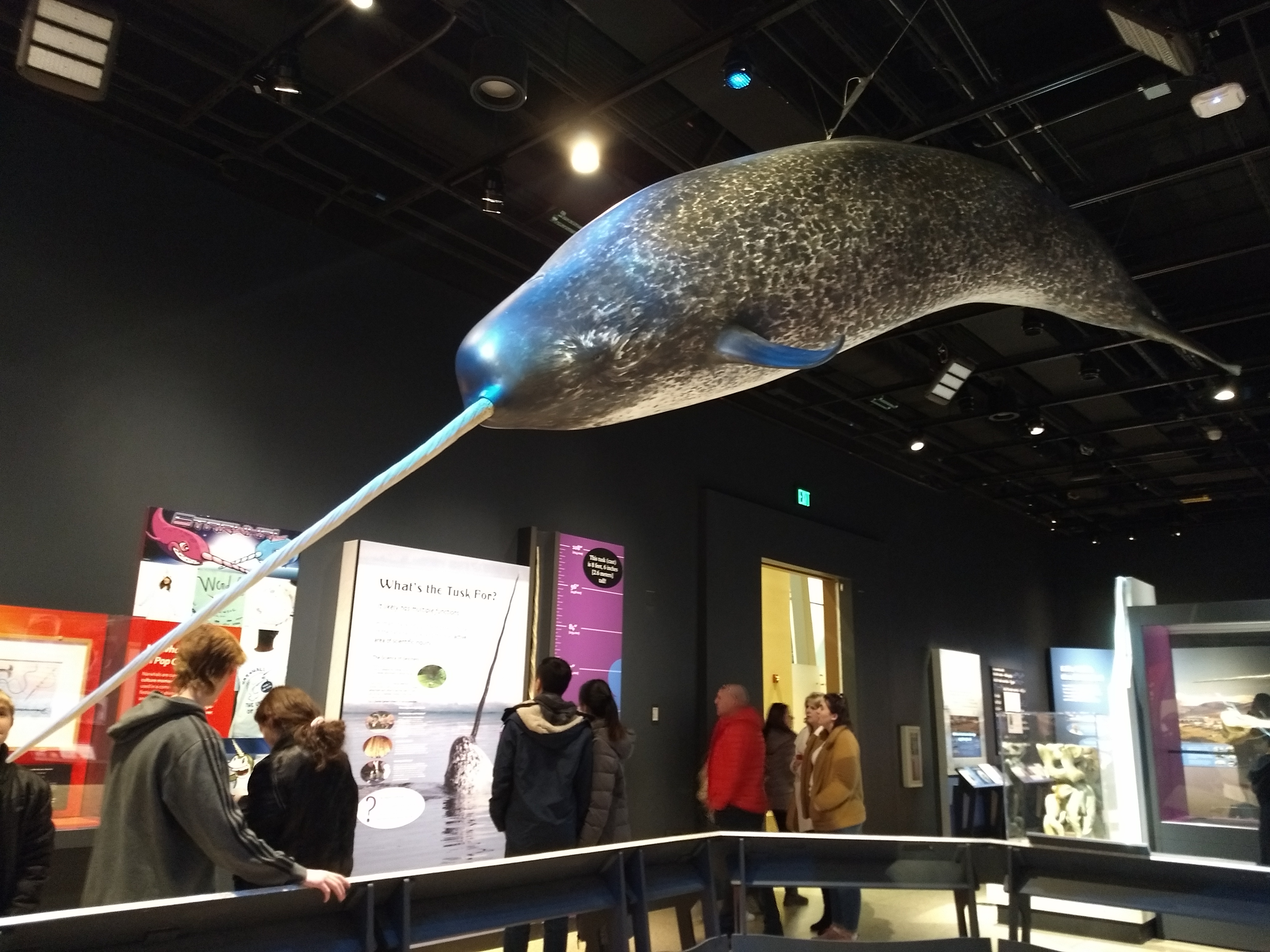Smithsonian’s narwhal exhibit will begin traveling around the U.S. in 2020
“Narwhal: Revealing an Arctic Legend” brings the Arctic to thousands of Smithsonian visitors every year--and sparks conversations about climate change and the importance of Indigenous research.

The narwhal exhibit at Smithsonian Museum of Natural History, first unveiled in August 2017, will run until the end of this year — and then it’s going to hit the road.
In April 2020, the exhibit will travel around the United States for several years with the Smithsonian Institution Traveling Exhibition Service. It’s touring schedule has yet to be announced.
“Narwhal: Revealing an Arctic Legend” features oral histories from the Inuit elders of Pond Inlet, Nunavut; artwork from Inuit, European and Asian collections depicting a centuries-long fascination with the narwhal and its tusk; the skull of a rare double-tusked narwhal behind glass; and, hanging over much of the exhibit, an 18-foot-long sculpture of a male narwhal.
The exhibition was the brainchild of Martin Nweeia, a dentist who has become one of the world’s foremost experts on narwhals. He was researching the tusk at the National Museum of Natural History; eventually, Nweeia’s research provided “a huge breakthrough” on the function of the tusk, says William Fitzhugh, director of the Arctic Studies Center at the Smithsonian Institution. “It’s the only tooth in nature in which the nerves come out through the surface of the tooth, which is amazing,” Fitzhugh explains.
Nweeia is fond of calling the tusk “the most interesting tooth in the world.”
The narwhal tusk, he says, is “unprecedented anywhere on the planet. There’s nothing like this, anywhere.”
Although the exhibit is centered around the narwhal, Nweeia and Fitzhugh both emphasize the fact that conversations around the increasingly popular animal can be an entry point to discussing other, bigger topics in the Arctic.
From maps of natural resource exploration in the Arctic to interactive displays showing rapidly warming temperatures and the loss of sea ice, the exhibit focuses on the ways the Arctic is changing through the lens of one of its most elusive animals.
“One of the most important stories we were wanting to tell was the climate story,” Fitzhugh says. “The people who we want to reach are the people who need to know more about it, and be convinced that something should happen.”
At the same time, he says, “we didn’t want to beat people over the head with it, because a lot of people then just turn off… So we sprinkled the climate messages throughout the exhibit, so it would come up time and time again, in ways that people could understand.”
Fitzhugh says the exhibit was a good fit for Smithsonian not only because of a growing interest in “that strange animal” and its connections to a changing world but also because “you only learn about the animal by working with the Inuit people.”
“That became a major part of our exhibit as well,” Fitzhugh says.
The community of Pond Inlet in Nunavut, Canada, played a crucial role in developing the exhibit. Elders and leaders shared traditional knowledge of Arctic animals, and the lands and waters they inhabit — engaging in several conference calls throughout the two years the exhibit was being developed, reviewing scripts, and even visiting Washington, D.C., for in-person meetings.
“We have to work with the people who know about it,” Fitzhugh says.
Fitzhugh also wanted the exhibit to clear up the misconception that Indigenous communities pose a threat to the narwhal.
“There’s no contradiction between hunting and conservation,” Fitzhugh says. The Inuit have been conservationists in their hunting for millennia, he says, only taking what they need to survive.
“People have been hunting ever since humans evolved. It’s their life, their subsistence in the Arctic,” he says. “We’re trying to make sure that the Arctic animals stay available, so that the people of the North who have been hunting these animals ever since they’ve been there, for thousands of years, can still access the animals.”
“The big issue for the narwhals is how is climate change going to affect them,” Fitzhugh says.
For those who are unable to visit the exhibit, either in D.C. or when it begins traveling around the country, Smithsonian also released a book to accompany the show. In 2018, it won the William Mills Prize for Non-Fiction Polar Books.






